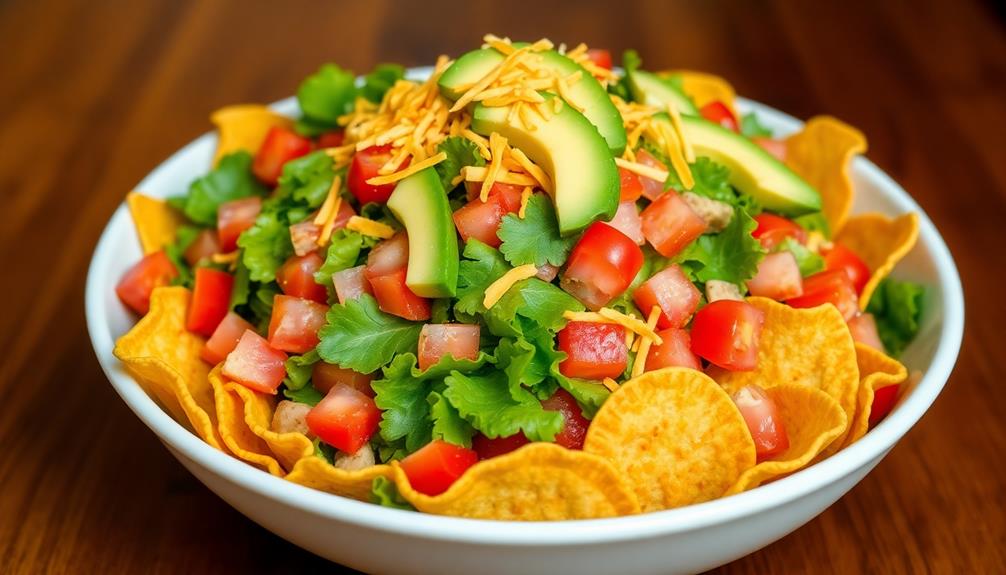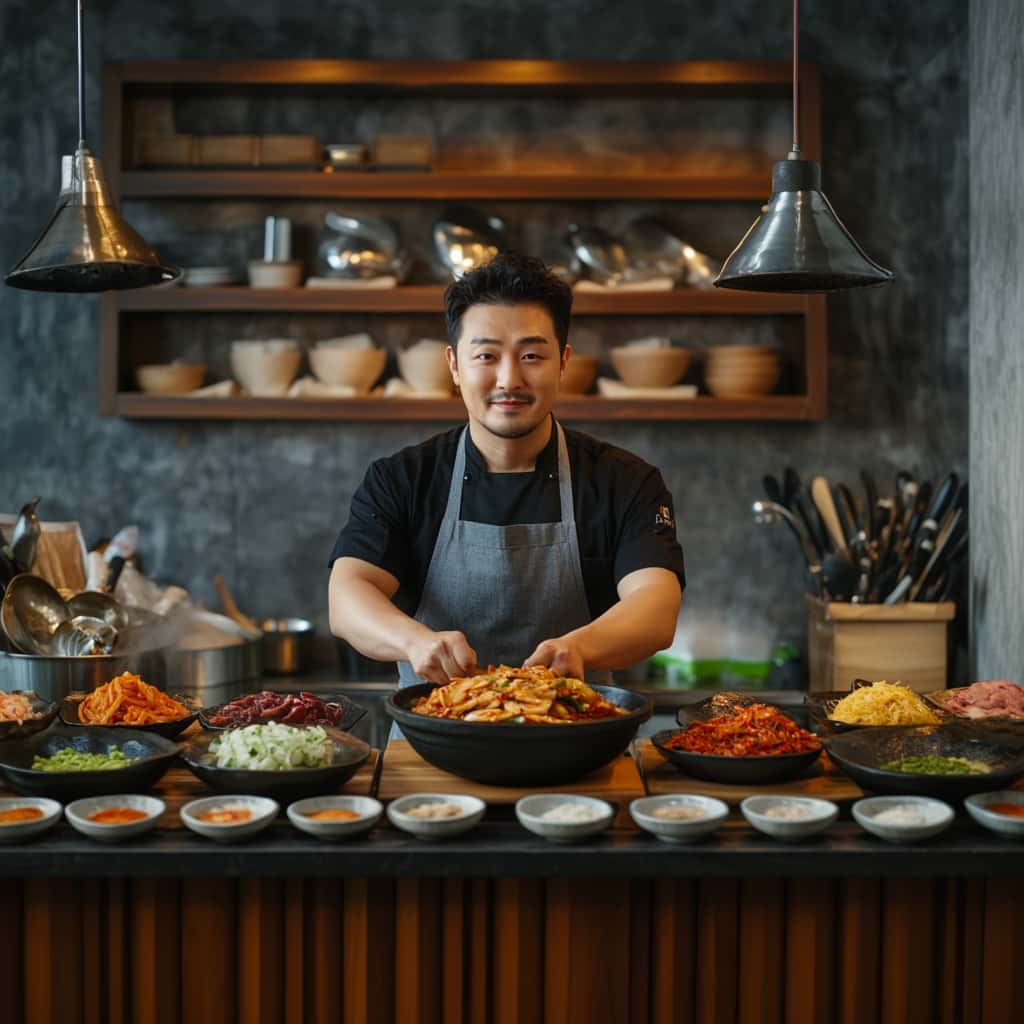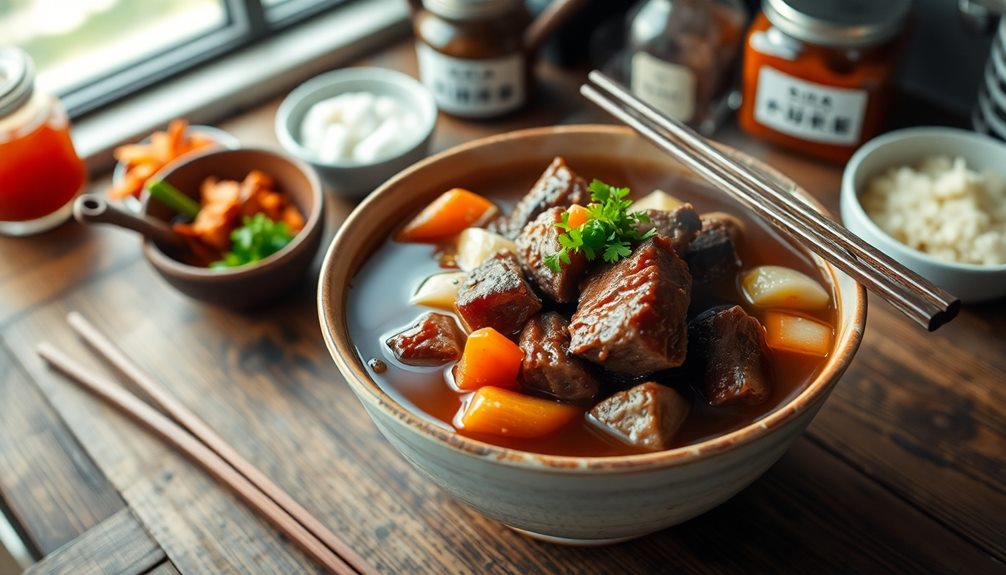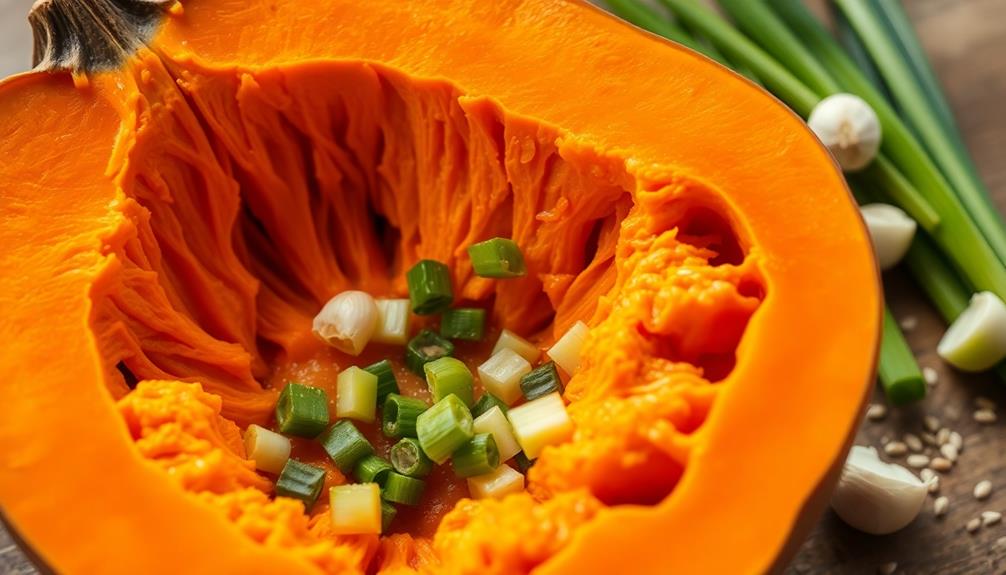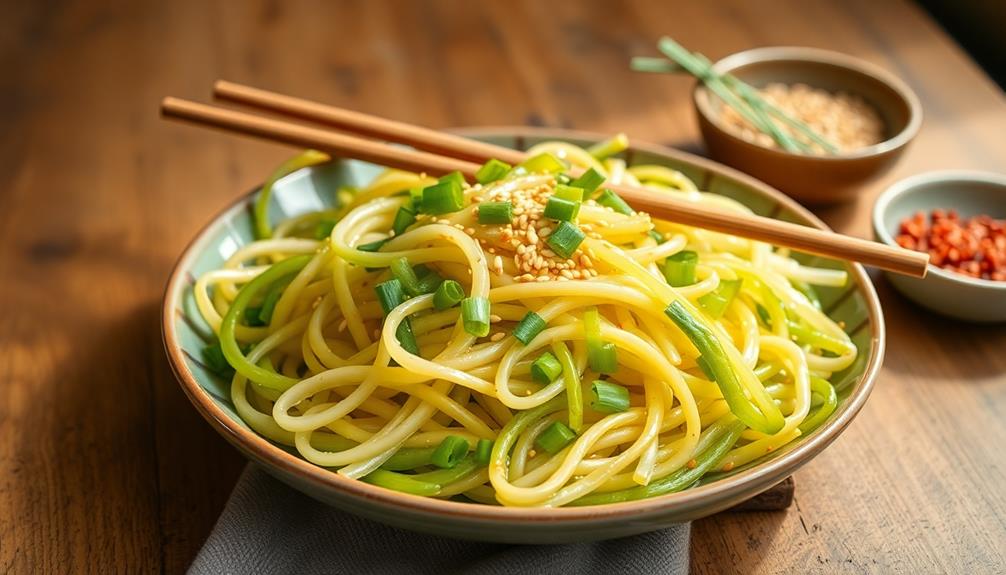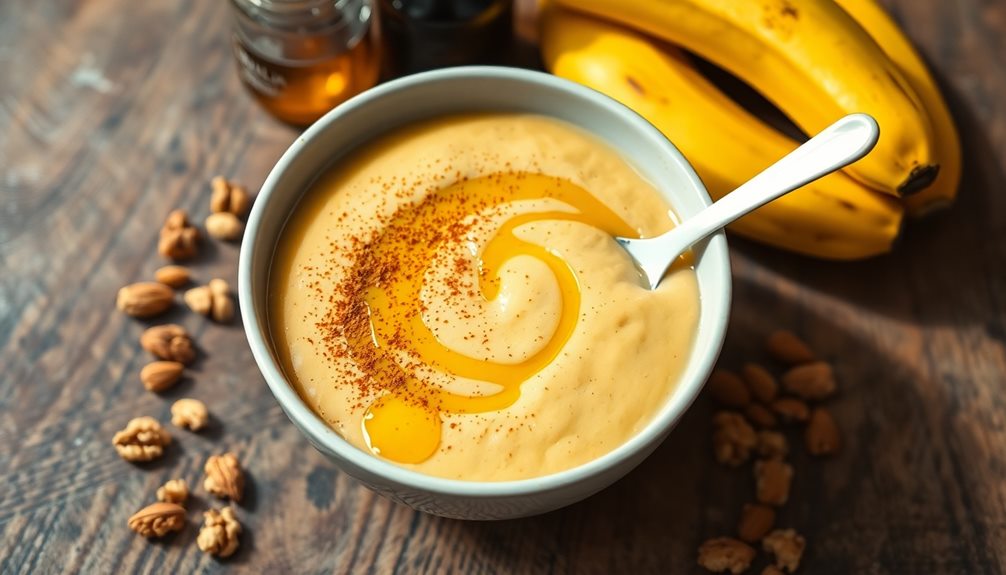Injeolmi is a fun and chewy Korean rice cake that you've got to try! This yummy treat, made from glutinous rice flour, is often enjoyed during celebrations like the Korean New Year. It's easy to make: just soak the rice, steam it, then pound it into a smooth dough. Shape it into little squares and coat them with soybean powder for a tasty twist! Not only does it taste delicious, but it also brings families together, sharing smiles and treats. So, are you ready to explore how to whip up this delightful dessert that everyone loves?
Key Takeaways
- Injeolmi is a traditional Korean rice cake, originating from the Goryeo Dynasty, symbolizing good fortune and community bonding.
- It is made from glutinous rice flour, sugar, water, and soybean powder, resulting in a chewy texture.
- The preparation involves soaking, steaming, pounding, and shaping the rice dough, followed by coating with soybean powder.
- Injeolmi is typically enjoyed during special occasions like Korean New Year and birthdays, appealing to all ages.
- It can be customized with various toppings and fillings, making it a versatile dessert for different tastes.
History
Injeolmi, a beloved traditional Korean rice cake, has a rich history that dates back centuries. It's not just a sweet treat; it's a part of Korean culture! You might be surprised to learn that people have enjoyed Injeolmi for over a thousand years.
It's believed to have originated during the Goryeo Dynasty, when rice was a staple food in Korea. Back then, families would celebrate special occasions with this delicious cake.
You'll find that Injeolmi is made from glutinous rice, which gives it a unique chewy texture. Once the rice is steamed and pounded, it's coated in finely ground soybean powder, giving it a nutty flavor that's simply irresistible.
Isn't it amazing how food can connect you to history?
Injeolmi isn't just a snack; it's often served during celebrations, like the Korean New Year or birthdays. Imagine gathering with friends and family, sharing stories and laughter while enjoying this delightful rice cake.
It's a tasty way to celebrate your heritage! So, the next time you take a bite of Injeolmi, remember you're savoring a piece of history that's been cherished for generations. How cool is that?
Recipe
Injeolmi is a beloved Korean rice cake known for its chewy texture and delightful flavors. Made from glutinous rice flour, this dish is traditionally enjoyed during celebrations and holidays, but it's also a fantastic treat to make at home. The subtle sweetness combined with the nutty flavor of the soybean powder gives Injeolmi its unique taste, making it a popular choice for both young and old alike.
This recipe will guide you through the process of creating this delicious treat from scratch, ensuring that you can enjoy the authentic taste of Korea right in your kitchen. Once you have mastered the art of making these Korean pancakes, you can impress your friends and family with your newfound culinary skills. This Korean savory pancakes recipe is perfect for any occasion, whether it’s a casual weekend brunch or a special celebration. With just a few simple ingredients and a little bit of patience, you can create a dish that will transport your taste buds to the bustling streets of Seoul.
To make Injeolmi, you'll need to prepare the glutinous rice flour dough first, which is then shaped and coated in a mixture of finely ground soybean powder. The process can be a bit labor-intensive, but the results are well worth the effort. Once you master the technique, you can get creative by adding your favorite fillings or experimenting with different coatings, making it a versatile dessert for any occasion.
Ingredients:
- 1 cup glutinous rice flour
- 1/4 cup sugar
- 3/4 cup water
- 1/2 cup soybean powder (roasted and finely ground)
- Cornstarch (for dusting)
Instructions:
In a microwave-safe bowl, combine the glutinous rice flour, sugar, and water. Mix well until there are no lumps, then cover the bowl with plastic wrap. Microwave the mixture for 2-3 minutes, stirring every minute until the dough becomes thick and translucent.
Once ready, let it cool slightly before kneading it on a cornstarch-dusted surface. Divide the dough into small pieces, shape them into small discs or squares, and then coat each piece generously with the soybean powder, ensuring they're well covered.
Extra Tips:
When making Injeolmi, it's essential to use glutinous rice flour specifically, as regular rice flour won't yield the desired chewy texture. If you prefer a sweeter version, you can adjust the sugar content to your taste.
Additionally, if the dough is too sticky, dust it with more cornstarch to make it easier to handle. Store the finished rice cakes in an airtight container at room temperature for a few days or refrigerate them to keep them fresh longer. Enjoy your homemade Injeolmi as a delightful snack or dessert!
Cooking Steps
Now that you've got your ingredients ready, it's time to jump into the fun cooking steps for making delicious injeolmi!
First, you'll soak the glutinous rice overnight, which is like giving it a cozy bath, so it's nice and soft for cooking.
After that, you'll steam the rice, pound it, shape it, and finally cut it into bite-sized pieces that are just perfect for munching!
Step 1. Soak Glutinous Rice Overnight

Soaking glutinous rice overnight is a crucial step in making Injeolmi, as it ensures the grains absorb enough water for optimal texture.
You'll want to start by measuring out the right amount of glutinous rice. Typically, about two cups will do for a nice batch. Rinse the rice under cold water to remove any dust or extra starch, which can make your rice too sticky.
Once it's nice and clean, place the rice in a bowl and cover it with water. Make sure the water level is a few inches above the rice, as it will soak up quite a bit.
Now, this is the fun part—let it sit and soak overnight! You can imagine the rice happily swimming in its cozy water bed, getting plump and ready for the next step.
Step 2. Steam the Soaked Rice
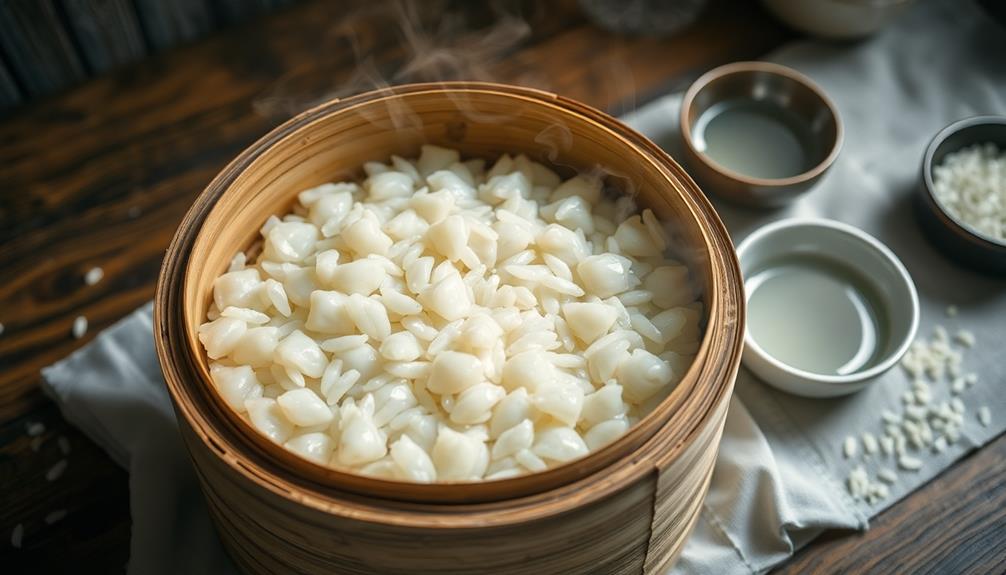
Once the rice has soaked and absorbed all that water, it's time to bring it to life by steaming it.
First, grab your steamer basket or a heatproof dish and line it with cheesecloth or a clean kitchen towel to prevent the rice from sticking.
Now, take your soaked glutinous rice and drain off any excess water. Spread the rice evenly in the lined basket or dish, making sure it's not too thick; about an inch or so will do!
Next, fill your pot or steamer with water and bring it to a gentle boil. Carefully place the basket or dish over the boiling water, making sure it doesn't touch the water itself. Cover it tightly with a lid, so the steam stays trapped inside.
Let the rice steam for about 30 to 40 minutes. You might want to peek occasionally to ensure everything's going smoothly, but avoid lifting the lid too often, or you'll let all that lovely steam escape!
When the rice is done, it should look translucent and have a sticky texture. Get ready, because you're just a few steps away from making delicious Injeolmi!
Step 3. Pound the Steamed Rice

Pounding the steamed rice is where the magic really happens! Once your rice is perfectly steamed and soft, it's time to unleash your inner chef. Grab a sturdy pestle or a heavy wooden spoon—this part can be a bit of an arm workout!
Place the hot rice into a large, flat bowl or a traditional mortar. Now, start pounding the rice with firm, rhythmic movements. You want to break down those grains until they become a sticky, smooth dough. Don't worry if it's a little messy; that's all part of the fun!
As you pound, you might feel tempted to add a pinch of salt or sugar for flavor, but hold off for just a moment! Keep going until the rice is fully transformed, and it starts to stick together. This can take about 10 to 15 minutes, so put on some upbeat music to keep your energy up!
If the rice feels too stiff, you can sprinkle a tiny bit of water to help it along. Once it reaches that perfect chewy consistency, you're ready to move on to the next step. Your hard work is about to pay off, and you'll be enjoying delicious Injeolmi soon!
Step 4. Shape the Rice Cake

With that perfectly pounded rice dough in hand, it's time to shape your Injeolmi!
First, sprinkle a little cornstarch on your clean countertop to keep the dough from sticking. Then, grab a handful of the warm dough, about the size of a small baseball. Roll it between your palms to form a smooth ball, feeling the soft texture as you go.
Next, flatten the ball gently with your fingers, creating a small disc. You want it to be about half an inch thick, so don't make it too thin! If you like, you can also shape it into a rectangle or even a cute little triangle—get creative!
Once you've shaped a few pieces, lay them carefully on the cornstarch-dusted surface. It's important to keep them separated so they won't stick together later.
If you're feeling extra adventurous, you can even sprinkle some finely chopped nuts or powdered soybean flour on top for added flavor.
Keep shaping until you've used all the dough. Now, look at those beautiful pieces of Injeolmi! You're one step closer to enjoying this delicious treat. Keep it up!
Step 5. Cut Into Bite-Sized Pieces
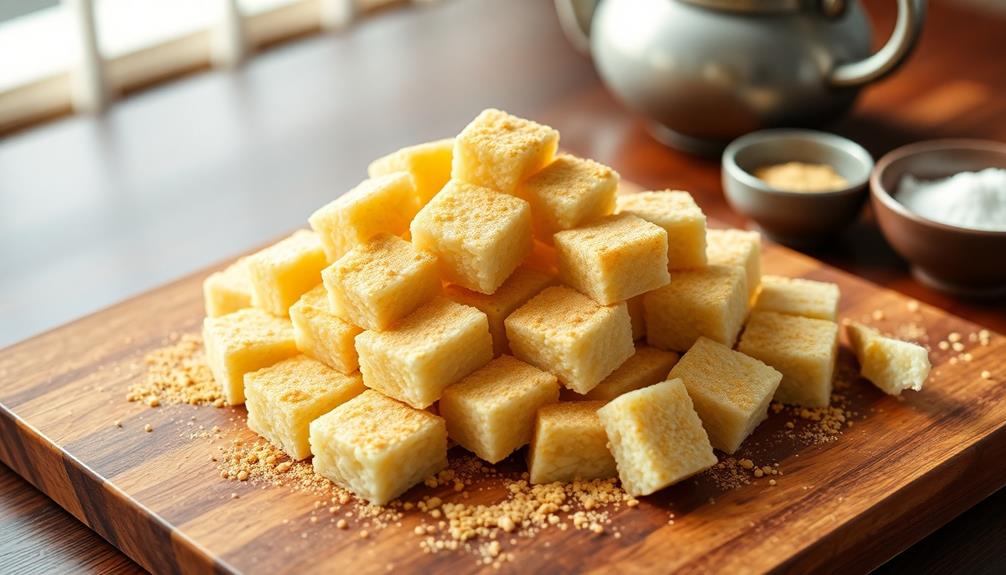
How do you transform your beautifully shaped Injeolmi into bite-sized pieces? It's easier than you think!
First, grab a sharp knife and lightly grease it with some oil. This'll help stop the Injeolmi from sticking to the blade, making your job a lot smoother.
Next, place your rice cake on a cutting board, and make sure it's stable.
Now, it's time to slice! Cut your Injeolmi into strips about one inch wide. If you want to make sure each piece is perfectly uniform, you can measure with a ruler or just eyeball it—whatever feels right!
Once you have your strips, chop them into squares or triangles. You can even get creative and make fun shapes if you're feeling adventurous.
After you've cut everything up, give each piece a little dusting of powdered soybean flour or sesame powder. This not only adds flavor but keeps the pieces from sticking together.
And voilà! You've got a delightful tray of bite-sized Injeolmi, ready to be enjoyed by family and friends.
Just remember, sharing is caring—so don't forget to save some for others!
Final Thoughts
As you wrap up your exploration of Injeolmi, it's clear that this beloved Korean rice cake holds a special place in the hearts of many. From its chewy texture to its delicious coating of powdered soybean flour, Injeolmi is more than just a treat; it's a delightful experience!
You've learned how it's made, the significance it carries in Korean culture, and the joy it brings during celebrations, like birthdays or holidays.
Imagine sharing a plate of Injeolmi with friends and family, each piece bringing smiles and happy memories. You might even be inspired to try making it yourself! While it can seem a bit tricky, remember that practice makes perfect. Plus, you'll impress everyone with your cooking skills!
Don't forget, Injeolmi can be enjoyed in many ways—whether plain, with different toppings, or even combined with fruits.
Frequently Asked Questions
What Are the Health Benefits of Injeolmi?
You'll find various health benefits in traditional snacks. They often provide energy, essential nutrients, and can support digestive health. Plus, many contain natural ingredients that promote overall wellness, making them a tasty, nutritious choice for you.
Can I Freeze Injeolmi for Later Use?
Yes, you can freeze it for later use. Just wrap it tightly in plastic wrap or an airtight container. When you're ready to enjoy, thaw it in the refrigerator for the best texture.
Is Injeolmi Gluten-Free?
You'll find that many rice cakes are gluten-free since they're typically made from glutinous rice flour. However, always check the specific ingredients, as some varieties might contain gluten or be processed in facilities with gluten.
What Are Common Variations of Injeolmi?
You'll find various delicious variations, like those made with different fillings, toppings like soybean powder or nuts, and flavors such as matcha or chocolate. Each adds a unique twist, enhancing the overall experience.
Where Can I Buy Injeolmi Outside Korea?
You can find injeolmi outside Korea at local Asian grocery stores or specialty markets. Online retailers like Amazon and food delivery apps might also offer it, so check those options for convenient purchases.

